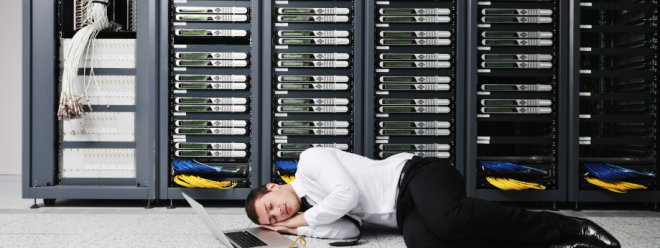How next-generation data centers and 5G are transforming the healthcare industry

How next-generation data centers and 5G are transforming the healthcare industry

Data centers are moving away from physical constraints. The modern data center is a dynamic amalgamation of cloud and on-premises resources distributed across multiple physical locations. These centers are equipped with the automation and intelligence capabilities required to process applications efficiently. They create an IT environment characterized by simplicity, adaptability and responsiveness, allowing IT professionals to shift their focus from system maintenance to groundbreaking business solutions. These next-generation data centers are known for their scalability, reliability, high availability and business continuity capabilities.
Data has become a cornerstone in many areas of life, including healthcare. Since healthcare is a dynamic process, constant vigilance is required to understand the strong demands on the system. It paves the way for advancement in all areas of healthcare to analyze, evaluate and pinpoint areas of necessity which include health education, patient safety, infection control, proactive prediction of upcoming health hazards. Data center solutions accelerate growth in healthcare quality and quantity with clearer, more accurate models that solve problems in every domain.
In healthcare, there are many high-resolution images and files that may require high-throughput computational processing for diagnosis and design. For example, through 5G, after receiving an MRI or CT scan, the image can be sent in real time to where it needs to be analyzed to provide a diagnosis. With 5G, telemedicine platforms can support high-resolution video and audio streaming in real time, allowing healthcare professionals to communicate with patients.
In addition to high-quality video and audio, 5G can significantly reduce latency compared to previous wireless technologies. 5G's target focus is on wearable health monitors that can perform local data analysis without being connected to the cloud, such as heart rate monitors that can independently analyze health data and provide necessary responses immediately to alert caregivers when a patient needs help.
Infection control currently represents one of the most difficult challenges in healthcare. A new generation of data solutions coupled with the power of 5G technology not only makes this challenge more compelling but also paves the way for a variety of opportunities. As a result, there have been significant shifts in approaches to teaching, treatment, and health care planning. The integration of next-generation data center solutions with 5G technology plays a crucial role in identifying sector-specific and regional challenges and disease patterns. This in turn leads to the development of custom solutions and algorithms.
5G technology brings greater efficiency, better patient outcomes and greater access to medical expertise around the world, ultimately improving the quality of healthcare services everywhere. I think the emergence of 5G will lead to more embedded devices or wearable devices, which will help bring large computers and data closer to the point of care, making the use of technology more user-specific, secure, accessible and decentralized .
It marks a new paradigm shift in patient engagement and enhances the patient experience through technology, providing them with a more immersive UI and UX experience on devices capable of leveraging Web3 standards, delivering a virtual universe-like experience.
In the ever-evolving field of digital healthcare, patient data security and privacy have become one of the most important aspects as IT systems become increasingly complex and threats to patient data continue to escalate. Security involves a variety of measures to protect an organization from external and internal cyberattacks and ensure the availability of healthcare services, the proper functioning of healthcare systems and equipment, protection of the confidentiality and integrity of patient data, and compliance with industry regulations. Monitoring access to sensitive data, providing the right access controls to the right users, and limiting access to information based on the concept of least privilege will ensure that the right users are using the data.
HIPAA, GDPR and DPDP Act contain privacy and security rules. Privacy rules govern who can access an individual's medical records and what they can do with that information. Under security rules, health organizations are required to exercise due diligence and work to ensure the security of patient data.
The convergence of next-generation data centers and 5G technology represents a groundbreaking shift that promises to enhance patient care, increase accessibility and enhance data security. Going forward, we expect to see increased applications of AI in areas such as drug development, medical diagnostics and patient care. Patient Empowerment Through greater access to health information and online resources, patients become more informed and proactive about their health care. Telemedicine, mHealth, virtual conferencing and the Internet of Medical Things (IoMT) are emerging healthcare technology trends.